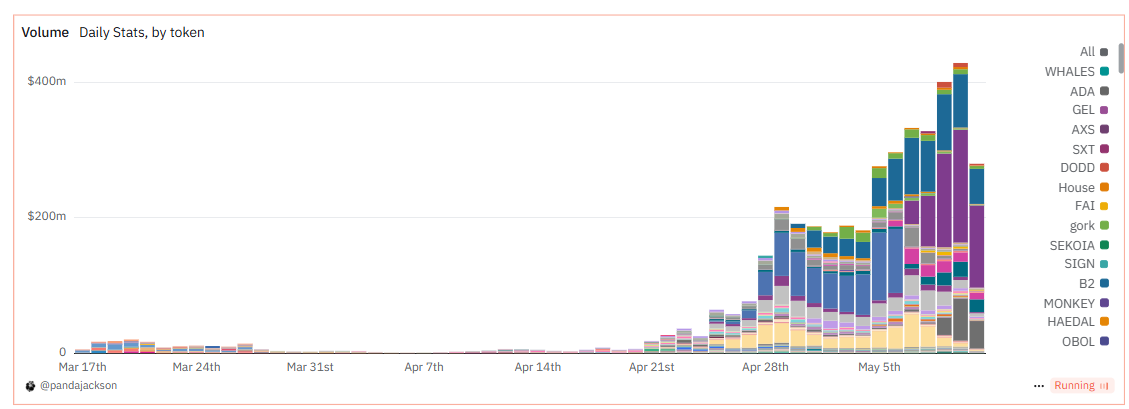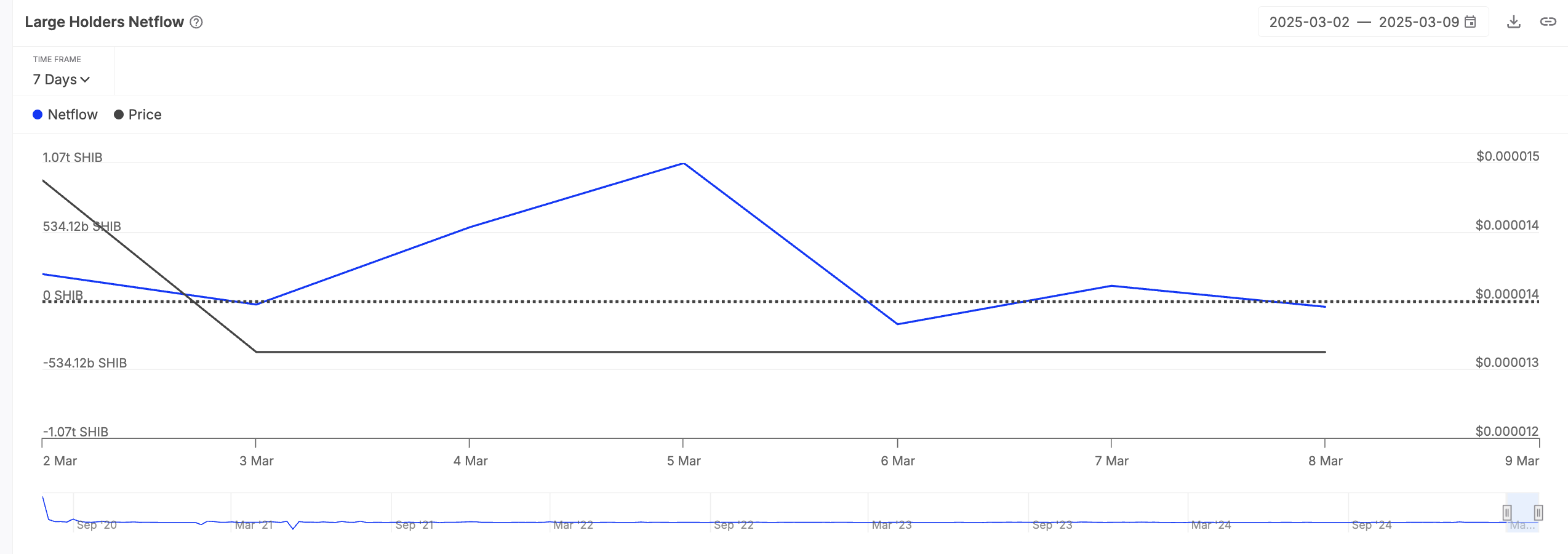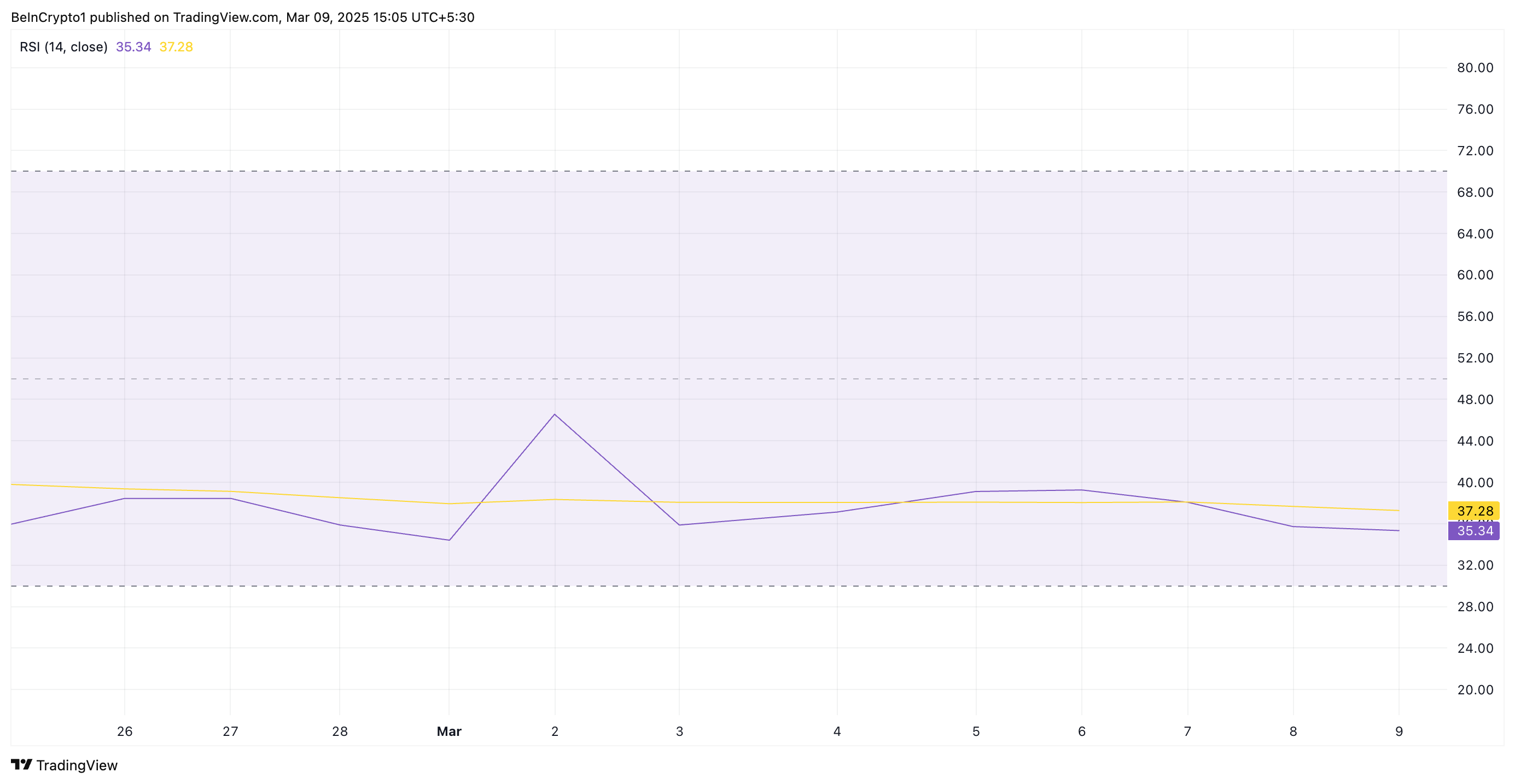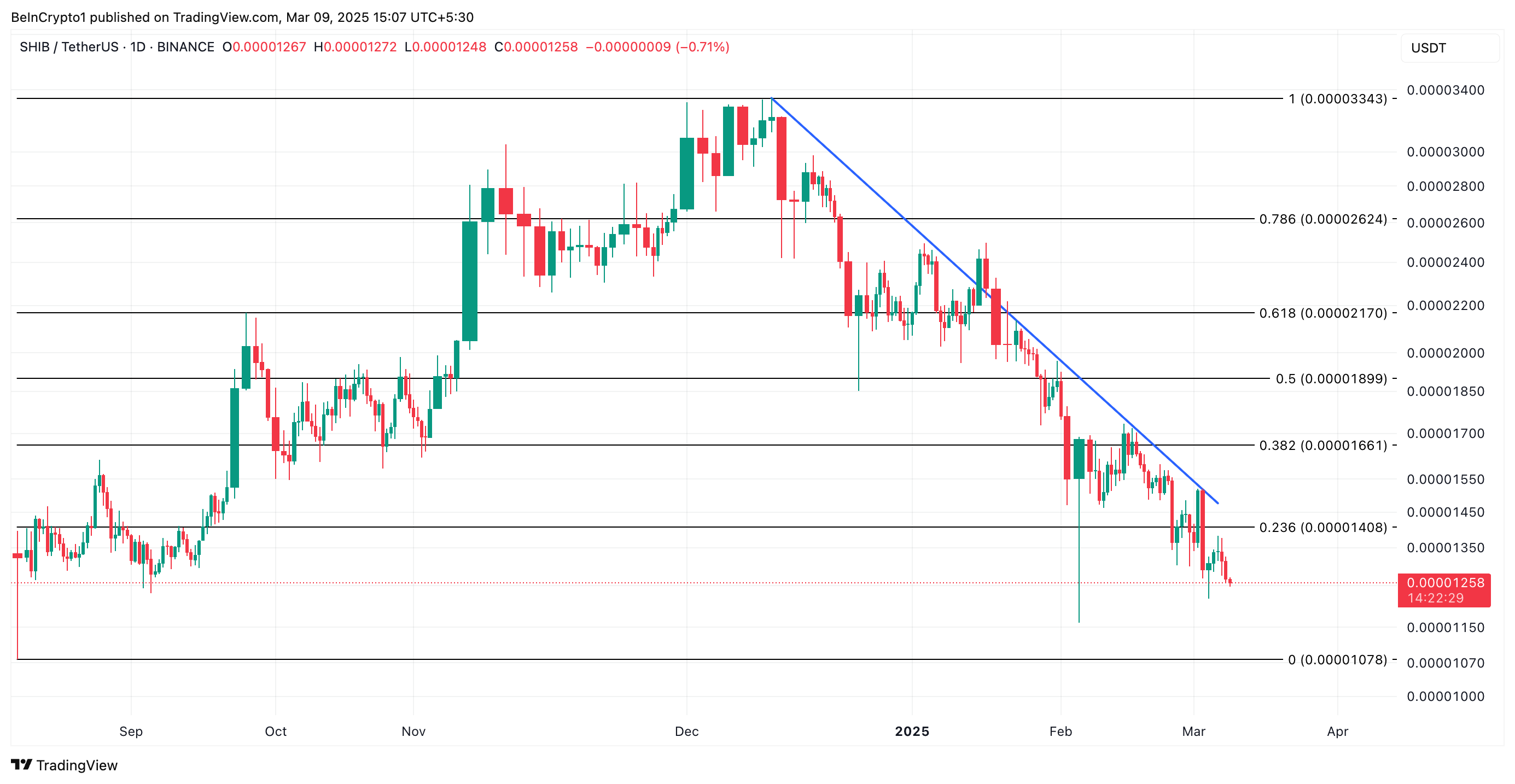A lot happened this week in crypto, marking developments expected to continue shaping the industry. Important headlines came from administrative decisions, ecosystem developments, and analysts probing the market outlook.
In case you missed it, the following is a roundup of some of the most important developments in the crypto market this week.
XRP Lawsuit’s Jay Clayton Became New SDNY Attorney
One of the most striking developments this week in crypto was the appointment of Jay Clayton as President Trump’s next pick for the SDNY’s US Attorney. The selection came amid Trump’s commitment to promulgate friendlier crypto regulations.
After tapping Clayton in November, the legal expert became the acting Attorney General this week.
“Trump’s former SEC Chair Jay Clayton has taken his position as interim US attorney for the Southern District of New York. He will serve for up to four months until confirmed by the Senate or appointed by Manhattan federal judges,” former Fox Business reporter Eleanor Terrett reported.
The move came as Democratic leaders in the Senate reportedly hinted at blocking Clayton’s nomination. Trump’s move to install him as interim could see Clayton avoid the Senate confirmation process.
Clayton is the legal expert who initially filed the longstanding legal action between the SEC and Ripple. As it happened, Clayton filed the lawsuit on December 22, 2020, and resigned the next day in what will be remembered as a “parting shot” for the agency.
Pi Network Pioneer Frustration Over Ambiguous Roadmap
Another crypto incident this week concerned Pi Network pioneers. As BeInCrypto reported, the controversial project released its Mainnet Migration Roadmap. However, it failed to impress pioneers as it lacked key details.
Specifically, several gaps sparked concerns, including failing to disclose how many Pioneers remain in the queue. Similarly, it was unable to show the network’s daily migration capacity. The absence of these figures makes it impossible for users to predict when their migration will occur.
Further, opaque criteria for node rewards and the UI’s “Transferable Balance” underestimating actual migrated amounts raised flags. Pi Network also offers no audit or error‑resolution process for users who spot mismatches in their historical mining data, exacerbating the fears.
Some pioneers went as far as challenging the project’s foundational narrative. They note that Pi’s statement “all tokens were minted at genesis” contradicts six years of “mining.”
“I thought we were mining all of these PI coins this whole time? I thought the security circles were the Consensus Mechanism. It kinda seems to me like there isn’t a blockchain, and never was one. What kind of “Blockchain protocol” would “Require” all tokens to be minted at genesis?” one community member wrote.
These concerns could worsen the project’s already controversial status. Among them is Bybit CEO Ben Zhou, who noted that Pi Network is more dangerous than meme coins beyond scam claims.
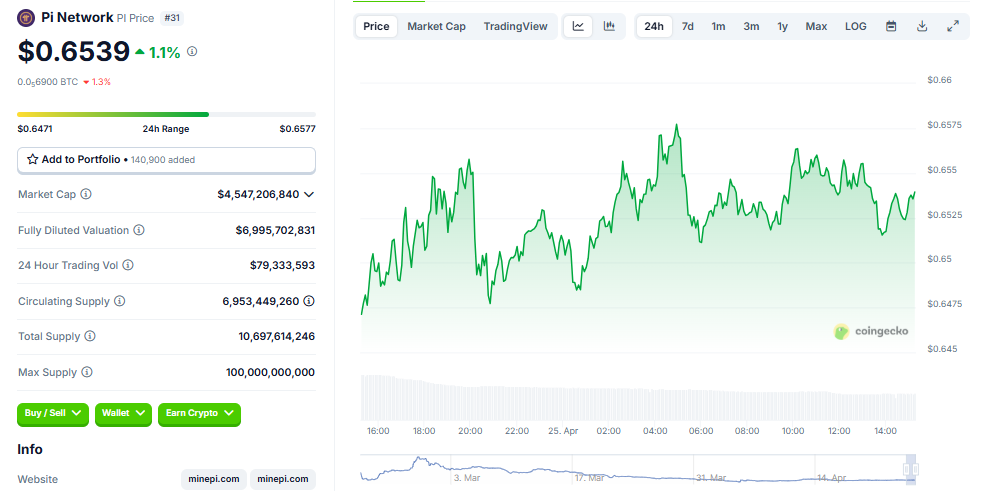
Data on Coingecko shows PI coin was trading for $0.6539 as of this writing, up by a modest 1.1% in the last 24 hours.
Bitcoin Cycle Unfolds Noticeably Different From Previous Ones
More interestingly, BeInCrypto reported a concerning shift: this cycle is unfolding remarkably differently than the past ones post-halving.
In previous cycles, BTC price tended to rally aggressively months after the Bitcoin halving. The post-halving period saw strong upward momentum and parabolic price action.
This trend was largely driven by retail enthusiasm and speculative demand, which proved most pronounced from 2012 to 2016 and 2016 to 2020.
Things are happening differently in the current cycle. Instead of accelerating after the halving, the price surge began in October and December 2024, driven by Bitcoin ETF (exchange-traded funds) hype. This was followed by consolidation in January 2025 and a correction in late February.
PancakeSwap Announces CAKE Tokenomics Date
This week in crypto, PancakeSwap announced the official date for its CAKE tokenomics, April 23. As BeInCrypto reported, key changes included the removal of veCAKE, staking, and revenue sharing, with 5.3 million CAKE to be burned annually to curb supply.
However, there was also controversy as Cakepie DAO pushed back against veCAKE removal. Several developers and community members believe CAKE Tokenomics 3.0 will benefit the project in the long term.
“At its core, CAKE Tokenomics 3.0 defends true value and protects CAKE holders by strengthening long-term fundamentals—such as aggressively cutting emissions to accelerate deflation and sustainably grow value,” Chef Philip said.
Meanwhile, others voiced strong concerns on X (Twitter), criticizing the decision to eliminate veCAKE. Among them was Cakepie DAO, one of the largest veCAKE holders, who called it non-transparent and potentially damaging to projects built around that model.
Against this backdrop, PancakeSwap resorted to a $1.5 million CAKE compensation plan.
“PancakeSwap is willing to provide 1.5M USD in CAKE to CakePie DAO primarily used to compensate CKP Holders if CakePie DAO enables mCAKE holders to redeem 1:1 back to CAKE and opens the redemption page in a timely manner if the proposal passes. Detailed plans will be announced once the mirror proposal on CakePie is completed,” the Head Chef of PancakeSwap wrote.
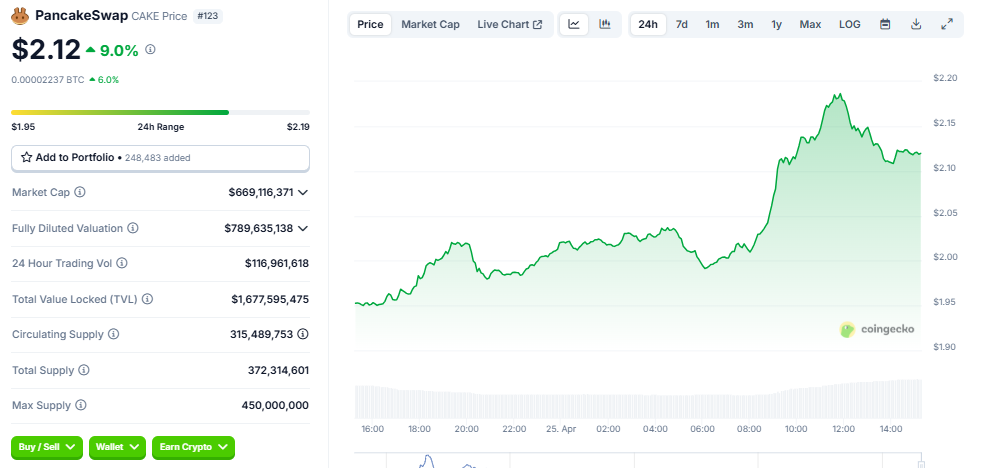
Data on CoinGecko shows Pancake’s CAKE was trading for $2.12 as of this writing, up by nearly 10% in the last 24 hours.
Zora Airdrop and Token Launch Announcement
Adding to the list of the many events that happened this week in crypto, Zora Network announced that it would airdrop 1 billion ZORA tokens (10% of the total supply) on April 23. The tokens would reward early platform users across two snapshot periods.
As it happened, the crypto airdrop happened in style, sparking confusion as it lacked an official checker or claim site. Users were required to go to the contract address and check their allocations.
Speaking to BeInCrypto, Jesse Pollak, the creator of the Base blockchain, said that one must not understand anything about crypto or the underlying infrastructure before posting on Zora. He also defended the value of content coins, emphasizing their potential for creators despite volatility.
In a recent development, the Zora token has launched on the Coinbase exchange, marking a significant move for the newly launched altcoin, now available on its platform.
The post This Week in Crypto: XRP Lawsuit’s Jay Clayton, Pi Network’s Ambiguous Migration Roadmap, Zora Airdrop, and More appeared first on BeInCrypto.




